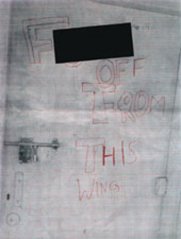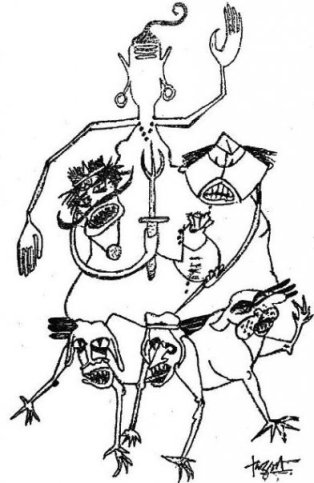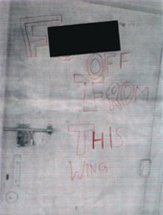http://thedeathofmeritinindia.wordpress.com/
The Death of Merit:Dr Jaspreet Singh
Dr Jaspreet Singh, 22 years,a student of Final Year, MBBS at Government Medical College, Chandigarh committed suicide on 27th Jan, 2008.
The Death of Merit: Dr Balmukund Bharti
On March 3rd, 2010, another Dalit, Balmukund Bharti, final year MBBS student from All India Institute of Medical Sciences (AIIMS), New Delhi committed suicide.
Read More
List of Dalit students committing suicides in India’s Premier Educational Institutions, (click here)
Report of Prof Thorat Committee on Caste Discrimination in AIIMS, New Delhi, (click here)
Report on Caste Discrimination in IIT Delhi,(click here)
An article ‘On Suicides, Caste and Higher Education‘, (click here)
Media Coverage
In Dalit student suicides, the death of merit, The Hindu, (May 8, 2011)
Death of merit, and of a family’s dreams, Hindustan Times, (May 10,2011)
Icarus goes to flying school:Why are Dalit students in India’s best educational institutions committing suicide?, Tehelka Magazine (Vol 8, Issue 20, 21 May 2011)
Les dalits ne sont pas les bienvenus dans les grandes écoles indiennes, inde.aujourdhuilemonde.com
India education: Dalit student suicide, Global Post (May 24, 2011)
A Dissonance In Saraswati’s Divine Veena:The spectre of caste prejudice lingers on even in our most prized institutions, OUTLOOK Magazine, June 27, 2011
http://youtu.be/4SRzk8Sf32Q
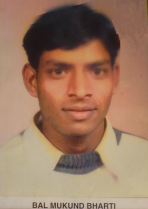 एम्स प्रशासन ने अपना रटा रटाया बयान दिया कि ” उक्त छात्र एम्स के कठोर शैक्षणिक वातावरण से तालमेल नहीं बिठा पाने की वज़ह से गहरे डिप्रेशन में चला गया था.”
एम्स प्रशासन ने अपना रटा रटाया बयान दिया कि ” उक्त छात्र एम्स के कठोर शैक्षणिक वातावरण से तालमेल नहीं बिठा पाने की वज़ह से गहरे डिप्रेशन में चला गया था.”
कृपया इस डोक्युमेंट्री को आप अवश्य देखें.
Read more…
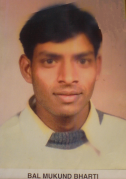 Three years later, Balmukund Bharti, a final year MBBS Dalit student at AIIMS, commits suicide on 3rd March, 2010.
Three years later, Balmukund Bharti, a final year MBBS Dalit student at AIIMS, commits suicide on 3rd March, 2010.
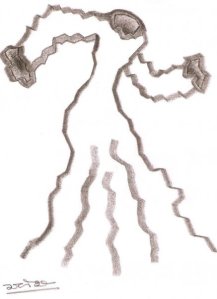 Chuni Kotal, a girl of 27, from the denotified Lodha tribe, the first graduate woman among the Lodha Savara and Kheria Savara of West Bengal, hanged herself on August 16, at her husband’s one room residence in Kharagpur, a railway town.
Chuni Kotal, a girl of 27, from the denotified Lodha tribe, the first graduate woman among the Lodha Savara and Kheria Savara of West Bengal, hanged herself on August 16, at her husband’s one room residence in Kharagpur, a railway town.
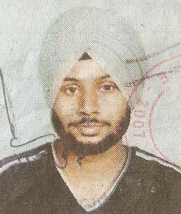 Dr Jaspreet Singh (1987-2008) was a school topper and quite bright Dalit student, from a very humble background.
Dr Jaspreet Singh (1987-2008) was a school topper and quite bright Dalit student, from a very humble background.
The Death of Merit:Dr Jaspreet Singh
Dr Jaspreet Singh, 22 years,a student of Final Year, MBBS at Government Medical College, Chandigarh committed suicide on 27th Jan, 2008.
The Death of Merit: Dr Balmukund Bharti
On March 3rd, 2010, another Dalit, Balmukund Bharti, final year MBBS student from All India Institute of Medical Sciences (AIIMS), New Delhi committed suicide.
Read More
List of Dalit students committing suicides in India’s Premier Educational Institutions, (click here)
Report of Prof Thorat Committee on Caste Discrimination in AIIMS, New Delhi, (click here)
Report on Caste Discrimination in IIT Delhi,(click here)
An article ‘On Suicides, Caste and Higher Education‘, (click here)
Media Coverage
In Dalit student suicides, the death of merit, The Hindu, (May 8, 2011)
Death of merit, and of a family’s dreams, Hindustan Times, (May 10,2011)
Icarus goes to flying school:Why are Dalit students in India’s best educational institutions committing suicide?, Tehelka Magazine (Vol 8, Issue 20, 21 May 2011)
Les dalits ne sont pas les bienvenus dans les grandes écoles indiennes, inde.aujourdhuilemonde.com
India education: Dalit student suicide, Global Post (May 24, 2011)
A Dissonance In Saraswati’s Divine Veena:The spectre of caste prejudice lingers on even in our most prized institutions, OUTLOOK Magazine, June 27, 2011
When a student from the lowest strata of society fights against all odds to prove her merit and reach the best educational institutions in India, are those institutions proving themselves meritorious enough to recognize her worth, to accommodate, let alone nurture her aspirations?When a Dalit or Adivasi student becomes an engineer, doctor, business graduate or scientist, it should be a cause of pride for not just the family or the community but for the entire nation. Instead, why do our nation and its educational institutions reward their merit with discrimination, humiliation, violence and death?This documentary is third in the series of our efforts to document caste-based discrimination prevalent in Indian higher education system resulting in large number of suicides of Dalit students in the Indian campuses.
Manish Kumar Guddolian, 20 years of age, was pursuing his IInd year, Integrated Dual Degree Programme, Department of Computer Science & Information Technology, at Indian Institute of Technology (IIT) Roorkee.
The only son of a Junior Warrant Officer at Indian Air Force, Manish committed ‘suicide’ by jumping off from 5th floor of his hostel on 6th February, 2011.
The documentary is based on the testimonies of Manish’s parents and other family members who have yet to come in terms with his death and are fighting against the collective might of IIT Roorkee and Roorkee Police that, as usual, want to relegate their child’s death to ‘a weak student getting depressed for not able to cope up with rigorous academic environment of highly competitive IITs’ .
However the truth is Manish committed suicide, unable to bear the constant castetist assaults and abuses by his own batch-mates, criminal attitude of his hostel warden and IIT Administration that instead of acting on his complaints forced him to live outside IIT Roorkee, and perhaps also due to the complete shattering of his faith on IIT Administration that was supposed to treat all its students as equals and without using caste-lenses.
The Death Of Merit – Manish Kumar (IIT Roorkee) Part – I
http://youtu.be/QA3wEeD4m2g
The Death Of Merit – Manish Kumar (IIT Roorkee) Part – IIhttp://youtu.be/QA3wEeD4m2g
http://youtu.be/4SRzk8Sf32Q
First two documentariesDr Jaspreet Singh, 22 years,a student of Final Year, MBBS at Government Medical College, Chandigarh committed suicide on 27th Jan, 2008.On March 3rd, 2010, another Dalit, Balmukund Bharti, final year MBBS student from All India Institute of Medical Sciences (AIIMS), New Delhi committed suicide.Read More
- List of Dalit students committing suicides in India’s Premier Educational Institutions, (click here)
- Report of Prof Thorat Committee on Caste Discrimination in AIIMS, New Delhi, (click here)
- Report on Caste Discrimination in IIT Delhi,(click here)
- An article ‘On Suicides, Caste and Higher Education‘, (click here)
Media Coverage
- In Dalit student suicides, the death of merit, The Hindu, (May 8, 2011)
- Death of merit, and of a family’s dreams, Hindustan Times, (May 10,2011)
- Icarus goes to flying school:Why are Dalit students in India’s best educational institutions committing suicide?, Tehelka Magazine (Vol 8, Issue 20, 21 May 2011)
- Les dalits ne sont pas les bienvenus dans les grandes écoles indiennes, inde.aujourdhuilemonde.com (May 19, 2011)
- India education: Dalit student suicide, Global Post (May 24, 2011)
- A Dissonance In Saraswati’s Divine Veena:The spectre of caste prejudice lingers on even in our most prized institutions, OUTLOOK Magazine, June 27, 2011
This article has been translated from the previous blog post ‘Who Killed Dr. Balmukund Bharti in AIIMS‘ by Ratnesh Kumar, PhD, Babasaheb Ambedkar National Institute of Social Sciences, Mhow, Indore.
स्वास्थ्य एवं परिवार कल्याण विभाग मंत्रालय, भारत शासन ने वर्ष २००६ में ऑल इंडिया इंस्टिट्यूट ऑफ़ मेडिकल साईंसेस (AIIMS), नयी दिल्ली, के दलित और आदिवासी विद्यार्थियों द्वारा संस्थान में व्याप्त जाति भेदभाव की शिकायतों की जांच के लिए तत्कालीन विश्वविद्यालय अनुदान आयोग के अध्यक्ष प्रो एस के थोरात के नेतृत्व में एक ३ सदस्यीय कमेटी का गठन किया था.
कमेटी ने अपनी रिपोर्ट ५ मई २००७ को सौंपी जिसमे न सिर्फ देश के इस ख्याति प्राप्त शिक्षण संस्था के दलित और आदिवासी विद्यार्थियों के प्रति जाति विद्वेष की भयावह दास्तान सामने आई बल्कि संस्थान के कुछ अनुसूचित जाति और जनजाति के शिक्षको की भी व्यथा प्रकट हुई. परन्तु इसके बावजूद सरकार ने कुछ नहीं किया.
इस रिपोर्ट की सिफारिशों के आधार पर न तो कार्रवाही की गई और न ही किसी दोषी को दण्डित किया गया.
तीन साल बाद, ३ मार्च २०१० को एम् बी बी एस (MBBS) अंतिम वर्ष के एक दलित छात्र बालमुकुन्द भारती ने अपने हॉस्टल के कमरे में फांसी लगाकर आत्महत्या कर ली. इसके कुछ दिनों पहले भी वह आत्महत्या का एक असफल प्रयास कर चुका था.
 एम्स प्रशासन ने अपना रटा रटाया बयान दिया कि ” उक्त छात्र एम्स के कठोर शैक्षणिक वातावरण से तालमेल नहीं बिठा पाने की वज़ह से गहरे डिप्रेशन में चला गया था.”
एम्स प्रशासन ने अपना रटा रटाया बयान दिया कि ” उक्त छात्र एम्स के कठोर शैक्षणिक वातावरण से तालमेल नहीं बिठा पाने की वज़ह से गहरे डिप्रेशन में चला गया था.”
पुलिस ने भी मृतक के पिता जो कि अपने बेटे की लाश लेने आये थे पर दबाव डाल कर हस्ताक्षर करवा लिए कि ‘ इस मौत का एम्स प्रशासन से कोई लेना देना नहीं है’.
इस तरह इस प्रकरण को बड़ी आसानी से ख़त्म करा दिया गया. पर सच्चाई तो यह है कि डॉ बालमुकुन्द भारती को उसकी आत्महत्या करने से पहले ही मार डाला जा चुका था.
आत्महत्या तो महज़ एक औपचारिकता भर थी.
प्रोफेसरों के द्वारा अपशब्दों की मार, पीड़ा और प्रताड़ना, वरिष्ठ छात्रों से रेगिंग के नाम पर बुरी तरह से पिटाई खाने और कैम्पस की मुख्यधारा से पूरी तरह से कटने का एकमात्र कारण उसका दलित होना था. डॉ भारती ने संस्थान में इस पीड़ा को पूरे ६ साल तक झेला था.
यह एक अत्यंत ही कष्टकारी और धीमी मौत थी.
बालमुकुन्द ने अपने कटु अनुभव माता-पिता और अन्य रिश्तेदारों से बांटे थे. जिनकी रिकॉर्डिंग हमने “The Death of Merit ” डोक्युमेंट्री में की है.कृपया इस डोक्युमेंट्री को आप अवश्य देखें.
Read more…
Why we must read these suicides as protest
May 23, 2011
By Malarvizhi Jayanth
Merit did not die. It kills. It lies in wait and takes the life of dalit students after they have entered the prestigious educational hellhole – by refusing to let them pass, by standing between them and the future. Merit is a murderer.The deaths of young people, the hopes of their parents and their communities, has forced the festering casteism and anti-democracy of the ‘prestigious’ educational institution into the public realm.Their deaths remind us again that Merit has blood on its hands, that bloody Merit is the offspring of generations of privilege and exploitation, that Merit was fed on blood.This is why we must read these suicides as protest, why we must reclaim these lives within the struggle against caste.
When did the language surrounding an educational institution become so vicious – elimination, testing, selection, exclusion, prestigious, hallowed, competitive, meritorious, premier, leading? A little less prestige and little more democracy would be welcome.
The anti-democratic nature of educational institutions is never clearer than when they begin to talk with smug complacence about how prestigious they are.
Within their hallowed portals, learning is not a broadening of the mind but a restriction of it. Political engagement will be systematically strangled at birth.
Who Killed Dr. Balmukund Bharti in AIIMS?
May 21, 2011
In 2006, a 3 member committee under Prof S.K. Thorat, Chairman, University Grant Commission, was instituted by the Ministry of Health and Family Welfare, Government of India to look into the complaints of caste-based harassment against Dalit and Adivasi students at All India Institute of Medical Sciences (AIIMS), New Delhi.
The committee came with a report, on 5th May, 2007, that brought out the horrors of caste-discrimination suffered not only by the students but also by handful of SC and ST faculties in the Institute that is considered to be one of the country’s premier educational institutions.
However, the government did nothing and singularly failed to initiate any action to punish the perpetrators or implement any of its recommendations.
 Three years later, Balmukund Bharti, a final year MBBS Dalit student at AIIMS, commits suicide on 3rd March, 2010.
Three years later, Balmukund Bharti, a final year MBBS Dalit student at AIIMS, commits suicide on 3rd March, 2010.
He hanged himself to death in his hostel room after a failed attempt on his life just few days before.
The AIIMS administration came out with the standard version of ‘a student who went into depression as he was not able to cope up with the rigorous academic environment of AIIMS’.
The police also closed the case by forcing the father, who had come to take the dead body of his son, to sign on the statement that ‘he has nothing against AIIMS administration’.
But the truth is that Dr Balmukund Bharti was killed much before he committed ‘suicide’. Suicide was a mere formality.
Towards our efforts in exposing rampant caste-discrimination that is prevalent against Dalit and Adivasi students, in country’s premier institutions, we are uploading Prof Thorat committee’s report on AIIMS, New Delhi.The committee was set up by Government of India, in September 2006, to enquire into allegations of differential treatment of SC and ST students in the above campus.It is probably the first effort in Independent India to probe into the kind of caste discrimination suffered by our students in any institution of higher learning and therefore its report is a very important document for us to understand the nature of caste-discrimination and its impact, not only in AIIMS but in other institutions of higher learning too.
The committee came with a report, on 5th May, 2007, that brought out the horrors of caste-discrimination suffered at every level not only by the students but also by handful of SC and ST faculties in the Institute that is considered to be one of the country’s premier educational institutions.
Media Reports on ‘The Death of Merit’
May 16, 2011
- In Dalit student suicides, the death of merit, The Hindu, (New Delhi, May 8, 2011)
- Death of merit, and of a family’s dreams, Hindustan Times, (Chandigarh, May 10,2011)
- Icarus goes to flying school:Why are Dalit students in India’s best educational institutions committing suicide?, (Tehelka Magazine, Vol 8, Issue 20, Dated 21 May 2011)
- Les dalits ne sont pas les bienvenus dans les grandes écoles indiennes (Dated May, 19, 2011)
- India education: Dalit student suicide, Global Post (May 24, 2011)
- A Dissonance In Saraswati’s Divine Veena:The spectre of caste prejudice lingers on even in our most prized institutions, OUTLOOK Magazine, June 27, 2011
The Hindu, (New Delhi, May 8, 2011)
In Dalit student suicides, the death of merit
by Vidya Subrahmaniam
He killed himself in his college library, unable to bear the insults and taunts. The suicide note recovered from his coat pocket charged his Head of the Department (HOD) with deliberately failing him and threatening to fail him over and over. Seven months later, a three-member group of senior professors re-evaluated his answer sheet and found that he had in fact passed the test.
The Death of Merit
May 7, 2011
When a student from the lowest strata of society fights against all odds to prove her merit and reach the best educational institutions in India, are those institutions proving themselves meritorious enough to recognize her worth, to accommodate, let alone nurture her aspirations?
When a Dalit or Adivasi student becomes an engineer, doctor, business graduate or scientist, it should be a cause of pride for not just the family or the community but for the entire nation. Instead, why do our nation and its educational institutions reward their merit with discrimination, humiliation, violence and death?
In our efforts to document caste-based discrimination prevalent in Indian higher education system resulting in large number of suicides of Dalit students in Indian campuses we have produced and uploaded two documentaries on two different cases of Dalit students’ suicides in India’s premier institutions.
Documentaries
Dr Jaspreet Singh, 22 years,a student of Final Year, MBBS at Government Medical College, Chandigarh committed suicide on 27th Jan, 2008.
On March 3rd, 2010, another Dalit, Balmukund Bharti, final year MBBS student from All India Institute of Medical Sciences (AIIMS), New Delhi committed suicide.
Read More- List of Dalit students committing suicides in India’s Premier Educational Institutions, (click here)
- Report of Prof Thorat Committee on Caste Discrimination in AIIMS, New Delhi, (click here)
- Report on Caste Discrimination in IIT Delhi,(click here)
- An article ‘On Suicides, Caste and Higher Education‘, (click here)
Media Coverage
- In Dalit student suicides, the death of merit, The Hindu, (May 8, 2011)
- Death of merit, and of a family’s dreams, Hindustan Times, (May 10,2011)
- Icarus goes to flying school:Why are Dalit students in India’s best educational institutions committing suicide?, Tehelka Magazine (Vol 8, Issue 20, 21 May 2011)
- Les dalits ne sont pas les bienvenus dans les grandes écoles indiennes, inde.aujourdhuilemonde.com (May 19, 2011)
- India education: Dalit student suicide, Global Post (May 24, 2011)
- A Dissonance In Saraswati’s Divine Veena:The spectre of caste prejudice lingers on even in our most prized institutions, OUTLOOK Magazine, June 27, 2011
Dalits and Adivasi students committing suicides in Indian campuses is not a new phenomenon.
One of the earlier and relatively well-known case is of Chuni Kotal, a tribal woman, first woman graduate among her tribe of the Lodha Shavars, who committed suicide on August 16, 1992, due to continuous caste-based harassment and discrimination by one of her Professor, Falguni Chakarvarti, at Vidyasagar University, Medinapur, West Bengal. She was pursuing her MA in Anthropology.
Her death united the Lodha Shabar community in protest, and became the focal point of a movement spearheaded by the Bangla Dalit Sahitya Sanstha questioning the liberal credentials of Bengali society. Mahasweta Devi wrote about her in Byadhkhanda (1994) and The Book of the Hunter (2002).
Given below are the excerpts from a commentary on Chuni Kotal’s suicide, ‘Story of Chuni Kotal‘, written by Mahasveta Devi that was published in Economic and Political Weekly (EPW), August 29, 1992, just 13 days after her suicide.
The complete article can be accessed at http://www.cscsarchive.org
Story of Chuni Kotal
Mahasveta Devi
Chuni Kotal’s suicide has ripped the mask off the face of West Bengal under Left Front rule: the caste prejudice and persecution and the government callous indifference
 Chuni Kotal, a girl of 27, from the denotified Lodha tribe, the first graduate woman among the Lodha Savara and Kheria Savara of West Bengal, hanged herself on August 16, at her husband’s one room residence in Kharagpur, a railway town.
Chuni Kotal, a girl of 27, from the denotified Lodha tribe, the first graduate woman among the Lodha Savara and Kheria Savara of West Bengal, hanged herself on August 16, at her husband’s one room residence in Kharagpur, a railway town.
The reasons that led Chuni, a unique woman, to take her own life, are palpable ones and she “became a victim of sheer injustice and callousness of the university authorities and the West Bengal government” (The Statesman, 23/08/1992)
Chuni was appointed a Lodha social worker in 1983 at Jhargram ITDP office. From childhood she had starved , worked in the fields, had had no money to purchase books, yet doggedly she continued to study.
About the DocumentaryThis documentary is second in the series of our efforts to document caste-based discrimination prevalent in Indian higher education system resulting in large number of suicides of Dalit students in Indian campuses.It is based on the testimonies of parents and family members of Dr Jaspreet Singh, 22 years, who was a student of Final Year, MBBS at Government Medical College, Chandigarh. He committed suicide on 27th January, 2008, by hanging himself on the 5th floor of his college’s library.In next few days, we are coming up with few more documentaries to expose the kind of caste-based hostility and harassment Dalit and Adivasi students have to suffer from the faculties, fellow students and administration in some of the country’s premier educational institutions. These documentaries are part of our efforts to make Indian educational system inclusive in real sense and free from caste-discrimination.
http://youtu.be/Rd9lcsy9Ty8
 Dr Jaspreet Singh (1987-2008) was a school topper and quite bright Dalit student, from a very humble background.
Dr Jaspreet Singh (1987-2008) was a school topper and quite bright Dalit student, from a very humble background.
He used to clear all his papers without fail, in 4 years of his MBBS, till he met a professor whose criteria of merit was not Jaspreet’s performance but his ‘caste’.
After completing his MBBS from Government Medical College, Chandigarh, Dr Jaspreet wanted to become a surgeon. However his dreams were cut short by a professor who not only humiliated him on caste lines but failed him twice in the same paper and threatened to further keep failing him.
Echoes of stillborn histories
May 1, 2011
What can we learn from this documentary, ’The Death of Merit’?
Bal Mukund Bharti was determined to become a doctor. And his teachers were also very determined: ‘you’ll never pass MBBS’, they told him.
Bal Mukund didn’t give up, nor did his family. Father, mother, married sister, uncle, aunt– they were all determined to support him in his ardent journey, which was steadily converted into an uphill struggle by AIIMS, to become a doctor. They scraped, pooled together whatever meagre resources they could to send him to AIIMS.
Uncle says they invested everything they earned in his education. Sister who made only 2,500 rupees a month helped whenever father, who worked in a job which sometimes made him wait 3 long months for wages, couldn’t. It wasn’t a small dream; if realized, it could have become a source of hope and pride for many more people outside the immediate family.
As Bal Mukund’s proud father says, ‘he was the first one from our community to become a doctor in fifty years!’. Bal Mukund’s intelligence and superior scholastic record instilled that kind of confidence in the family, stoked such high hopes.
Imagine: the first doctor from a community in fifty years, or in two millennia, possibly. Also imagine Rakesh Sharma or Kalpana Chawla, people of the ‘wrong’ race, being told by the Russians or the Americans: ‘you’ll never go into space’.
But AIIMS was determined it would see Bal Mukund only as a ‘harijan’, as a person from the ‘wrong’ caste. Imagine history being snuffed out in the womb. That shouldn’t be very difficult to imagine if you step two years back into history and think of Senthil Kumar of the University of Hyderabad.

